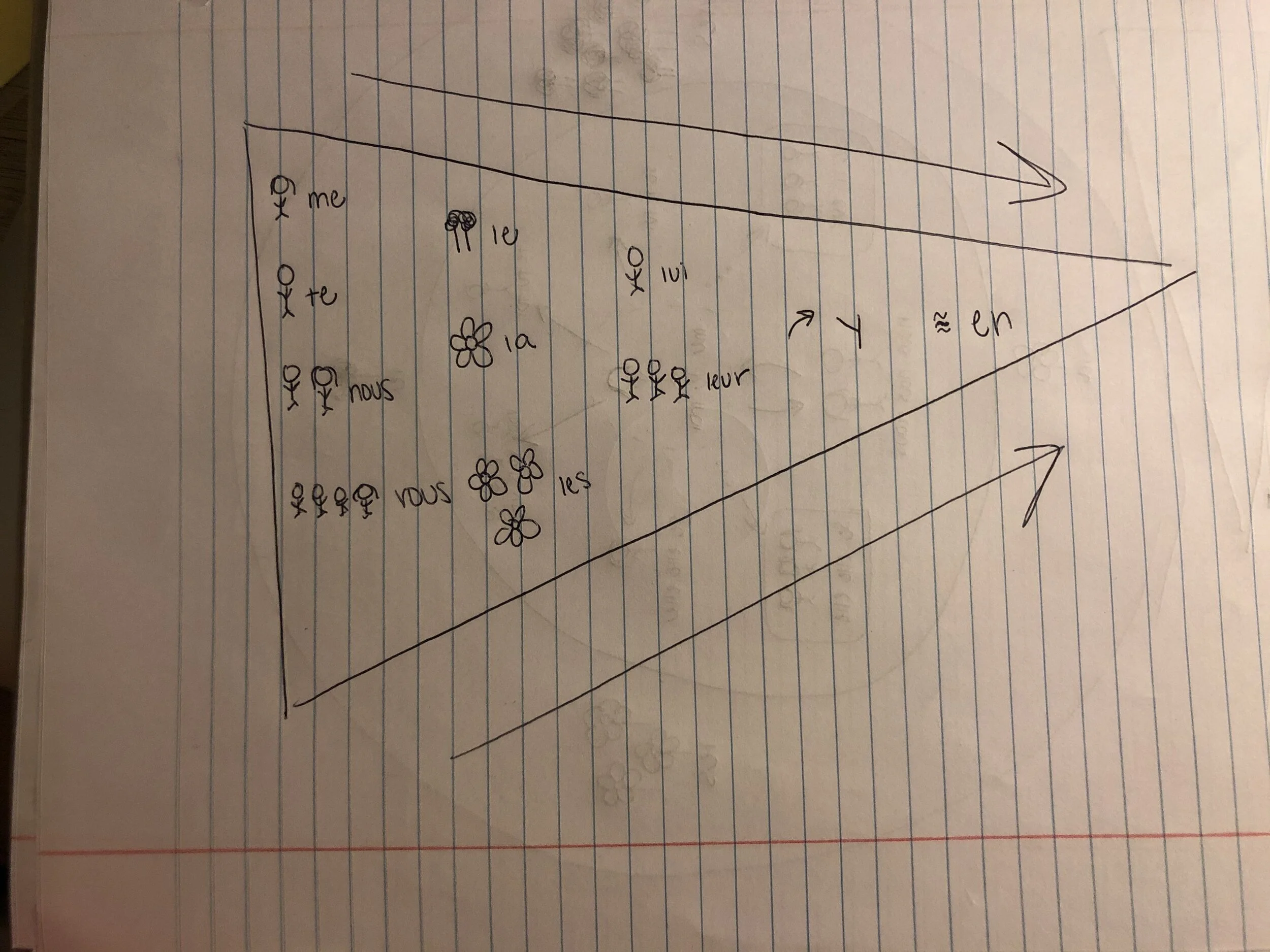Leaning in to Visual Learning
I quickly came to acknowledge and appreciate See What I Mean’s commitment to learning and continuous growth. Completing my first year as a part of the See What I Mean team also means that I completed 52 weeks of reflecting on the question, “what have you learned this week?”. After answering this question many times over the past year, what has stood out to me is not the different tools and skills I’ve gained, but instead, it’s that I learned how different learning strategies greatly affect my ability to have a deep and meaningful understanding of information. The most effective strategy for me being visual learning.
This picture is to show the relationship between pronouns. The core of the circle is one person which is the “I or me” pronoun. As the circle expands the relationship between the core individual and other pronouns become more distant. So, the second circle are the relationships to other people and the third circle represents the relationships to other objects.
We live in a visual world and we are designed to learn visually, but we keep teaching in ways where information is overloaded and visuals are disregarded. We have all been in a meeting where information is shared and you believe to have a basic understanding of the concept. Then, towards the end of the meeting the person next to you reflects on the shared information and you realize they understood the same words in a completely different way than you. Now imagine the same meeting but the facilitator showed a visual to solidify the concept, it is more likely that you and the person next to you will have a more unified and comprehensive understanding of the same concepts and ideas. By using visuals to deepen our learning we form stronger connections with our ideas. So, if we recognize the impact of including visuals, why do we still teach in a way that we are not designed to learn?
As I’ve begun to experience the benefits of visual learning I keep asking myself, why do we not teach or facilitate meetings with visuals more often? I quickly realized we don’t because it seems difficult. I became so used to learning through words, when I tried to conceptualize my thoughts into images on my own I had no clue where to start. So during my last semester of my undergraduate degree, I decided to lean into visual learning and challenge myself to think visually.
I’ve started this process with my French language course by writing my French notes in pictures. At first, it was difficult to know what to draw, but as time progressed the images just naturally made sense with the content presented. Although the images may have looked messy, my notes became clearer and I had better information retention and a deeper understanding of the material that was discussed in class. The visuals also helped me explain the content to my classmates in an efficient way.
This triangle diagram represents where you place certain pronouns in a sentence. The words closest to the point of the triangle would go before the words towards the back of the triangle. This also shows how the pronouns group together and narrow down as they get less specific.
Visually learning helps us understand the relationship between concepts and helps us stay connected. This is only my first step as I continue to build my visualization skills. If you are looking to enhance how you use visuals in your meetings and work, I encourage you to set a similar goal by focusing on your visual thinking. Here is your first step: When you are in meetings that you are not facilitating, try to take visual notes (draw your notes rather than write them). Don’t worry about how they look, just try to jot down some images that could help you better understand the information you are hearing.
See What I Mean is commitment to learning and continuous growth. To discover how See What I Mean consultant can help you discover how visual learning will impact your organization, schedule a Discovery Session by clicking the button below. For a hands-on experience with effective visual learning, enroll in our self-guided course, “Effective Meetings in Uncertain Times by clicking ‘Enroll’ below.
Author: Jenna Hoover


